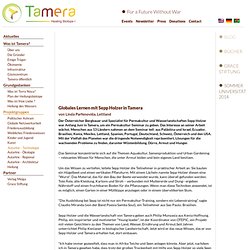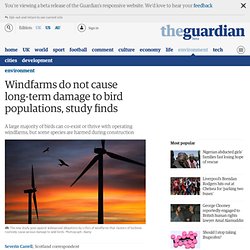

AUTARKE WELT - Autarke Welt - Mehr Bewusstsein für ein autarkes, selbstbestimmtes Leben. Wir können Dinge selber tun oder sie von anderen erledigen lassen und dafür bezahlen.

Jede dieser beiden Möglichkeiten hat ihre „Besonderheiten“. In den vergangenen hundert Jahren hat die Menschheit enorme Veränderungen erlebt, sei es im politischen, gesellschaftlichen oder im technischen Bereich. Eine Entwicklung weg von der Unabhängigkeit des Individuums, hin zur scheinbar perfekt organisierten Welt. Einerseits unglaublicher Fortschritt in vielen Bereichen der Hochtechnologie für Industrie und wenige Experten, andererseits immer größerer Verlust von persönlichen Kenntnissen und Basisfähigkeiten der Menschen. Tätigkeiten, die vor einigen Jahrzehnten noch fast jeder kannte und ganz selbstverständlich beherrschte, rufen heute gerade bei jungen Menschen bestenfalls Schulterzucken hervor.
"Der Weise baut sich vor der Regenzeit sein Haus. " In der Praxis ist es nicht einfach, Selbstversorger und zu 100% autark zu sein. Hierfür sind Netzwerke mit gleichdenkenden Menschen wichtig. Sepp Holzer - Das Wunder der Permakultur. Es ist wie eine Verhöhnung aller gängigen Lehrbücher: Bei Josef Holzer, in der Bergbauernzone in Lungau, dem Sibirien Österreichs, in einer Höhe zwischen 1100 und 1500 Metern, tragen 14.000 Obstbäume die schönsten und üppigsten Früchte.

Und nicht nur das. Entgegen allen konventionellen Regeln und Bergbauern-Traditionen und trotz der Grenzlage des Hofs mit einer durchschnittlichen Jahrestemperatur von 4,5 Grad hat der Bauer dort eine exotisch anmutende Terrassenlandschaft angelegt; dort, wo normalerweise nur Fichten und Legföhren wachsen, gedeihen nun auf 46 Ha Grund die verschiedensten Getreide-, Obst- und Gemüsesorten, die man in dieser Lage niemals vermuten würde: Zitronen, Kirschen, Marillen, Äpfeln, Kiwis, Feigen, Pfirsichen, Orangen Maroni, Birnen - Aufzählung garantiert unvollständig! Ohne Treibhaus. Daneben Kräuter, Pilze oder Enzian, dessen Wurzeln für die Schnapsherstellung verwendet werden. Permakultur beginnt mit der Planung eines ökologischen Systems. Offener Tag Juni 2010. Der Österreicher Bergbauer und Spezialist für Permakultur und Wasserlandschaften Sepp Holzer war Anfang Juni in Tamera, um ein Permakultur-Seminar zu geben.

Das Interesse an seiner Arbeit wächst. Ten Most Radioactive Places on Earth. While the 2011 earthquake and worries surrounding Fukushima have brought the threat of radioactivity back into the public consciousness, many people still don't realize that radioactive contamination is a worldwide danger. Radionuclides are in the top six toxic threats as listed in the 2010 report by The Blacksmith Institute, an NGO dedicated to tackling pollution. You might be surprised by the locations of some of the world’s most radioactive places — and thus the number of people living in fear of the effects radiation could have on them and their children. 10.
Hanford, USA The Hanford Site, in Washington, was an integral part of the US atomic bomb project, manufacturing plutonium for the first nuclear bomb and "Fat Man," used at Nagasaki. 9. 8. The Italian mafia organization just mentioned has not just stayed in its own region when it comes to this sinister business. 7. 6. 5. 4. 3. 2. 1. Three Plants That Live in the Salt Marsh. Are invasive species really that bad for the environment? Tamarisk, a Eurasian shrub, is your classic invasive species—designated one of America's "least wanted" plants by the National Parks Service.

In recent decades, it has spread along Southwestern riverbanks, replacing native trees such as willows and cottonwoods. For nature lovers in the region, tamarisks (also known as saltcedars) rank somewhere between Land Rovers and James Inhofe. Measures to thwart them include burning, herbicides, and "tammy whacking" (physical removal sometimes done by freelance volunteers). Kamal Meattle on how to grow fresh air. 7th Grader mimics Nature. 13 year old copies Nature to Improve Solar Performance Thirteen year old Aidan Dwyer was walking in the woods in Upstate New York in the winter and noticed a spiral pattern to tree branches.

Aidan realized the tree branches and leaves had a mathematical spiral pattern that could be shown as a fraction. After some research he also realized the mathematical fractions were the same numbers as the Fibonacci sequence. "On the oak tree, the Fibonacci fraction is 2/5, which means that the spiral takes five branches to spiral two times around the trunk to complete one pattern. Other trees with the Fibonacci leaf arrangement are the elm tree (1/2); the beech (1/3); the willow (3/8) and the almond tree (5/13) How New Financing Models Could Make Solar the Facebook of the Energy Industry. Windfarms do not cause long-term damage to bird populations, study finds. A major new study has quashed fears that onshore windfarms are causing long-term damage to bird populations, but found new evidence that some species are harmed when windfarms are built.

The study by conservationists into the impacts on 10 of the key species of British upland bird, including several suffering serious population declines, concluded that a large majority of species can co-exist or thrive with windfarms once they are operating. But the study, the largest carried out in the UK into the impact of onshore windfarms on bird life, also found strong evidence that some species suffered serious harm while windfarms are being built.
"It shows that there can be serious species-level impacts in the construction phase, so construction in the right place is absolutely key. But what it hasn't shown is that windfarms are 'bird blenders'. Coffee as Biofuel: Good to the Last Drop. Ah, that first cup of coffee in the morning. It really gets you moving. And soon, it could get your car moving, too. According to research from the Department of Chemical and Materials Engineering at the University of Nevada, used coffee grounds could be a near-endless and extremely profitable source of biofuels.